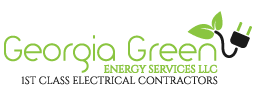Clean School
Bus Program
Building a Better America with the 2021 Bipartisan Infrastructure low.
School buses travel over four billion miles each year, providing the safest transportation to and from school for more than 25 million American children every day. However, diesel exhaust from these buses can contribute to air quality problems and has a negative impact on human health, especially for children, who have a faster breathing rate than adults and whose lungs are not yet fully developed. This funding to support low- and zero-emission vehicles that transport our nation’s children will beneft communities across the United States, especially communities that have been historically underserved. Schools bus feets will beneft by using the newest and cleanest technologies available.
The Bipartisan Infrastructure Law (BIL) provides $5 billion over fve years (FY22-26) for the replacement of existing school buses with lowand zero-emission school buses. Under the Clean School Bus Program, half of the available funding is dedicated for zero-emission school buses and half is for clean school buses.
Zero-emission school bus:
A school bus that produces zero exhaust emission of any air pollutant and any greenhouse gas.
Clean school bus:
As defned by the BIL, a school bus that reduces emissions and is operated entirely or in part using an alternative fuel or is a zero-emission bus.
Eligible Recipients
Eligible recipients are defned as:
State or Local Governmental Entities
That are responsible for:
- Providing school bus service to one or more public school systems; or
- Purchase of school buses.
Tribes, Tribal Organizations, and Tribally Controlled Schools
That are responsible for:
- Providing school bus service to one or more Bureau-funded schools; or
- Purchase of school buses.
Usage Requirements
All replacement low- and zero-emission school buses must:
- Be operated as part of the school feet for which the award was made for not less than 5 years;
Funding
Awards up to 100% of the cost of the replacement bus and charging or fueling infrastructure are possible, and EPA may award funding for bus replacement and infrastructure through grants, rebates, or contracts.
EPA may prioritize applications that propose to replace buses that serve:
- High-need local education agencies;
- Tribal schools;
- Rural schools;
- Low-income area schools; or
- Applications that provide cost share through public-private partnerships, grants from other entities, or school bonds.
In making awards for low- or zero-emission clean school buses, EPA will consider the following criteria without preference to any individual criterion:
- Lowest overall cost of bus replacement;
- Local conditions, including the length of bus routes and weather conditions;
- Technologies that most reduce emissions; and
- Whether funds will bring new technologies to scale or promote cost parity between old technology and new technology
While new buses meet EPA’s tougher emission standards, many older buses continue to emit pollutants that can be harmful to health like nitrogen oxides (NOx) or particulate matter (PM). Students are particularly vulnerable to air pollution inside and near older diesel school buses, and these pollutants increase their risk of asthma and other respiratory illness. Bus drivers and other school staff are also exposed to diesel exhaust.
The Bipartisan Infrastructure Law provides an unprecedented amount of funding to clean a substantial portion of the nation’s feet of nearly 500,000 school buses. These new cleaner school bus replacements will produce either zero or low tailpipe emissions compared to their older diesel predecessors. School bus upgrades funded under this program will result in cleaner air on the bus, in bus loading areas, and in the communities in which they operate.

Learn More
Coming soon! EPA is developing a new website and will post more information in the coming months about the Clean School Bus Program at https://www.epa.gov/cleanschoolbus. This new page will feature information about electric and alternative fuel buses, technical resources for fleets about infrastructure considerations, information about upcoming funding opportunities, and details about how to apply.
